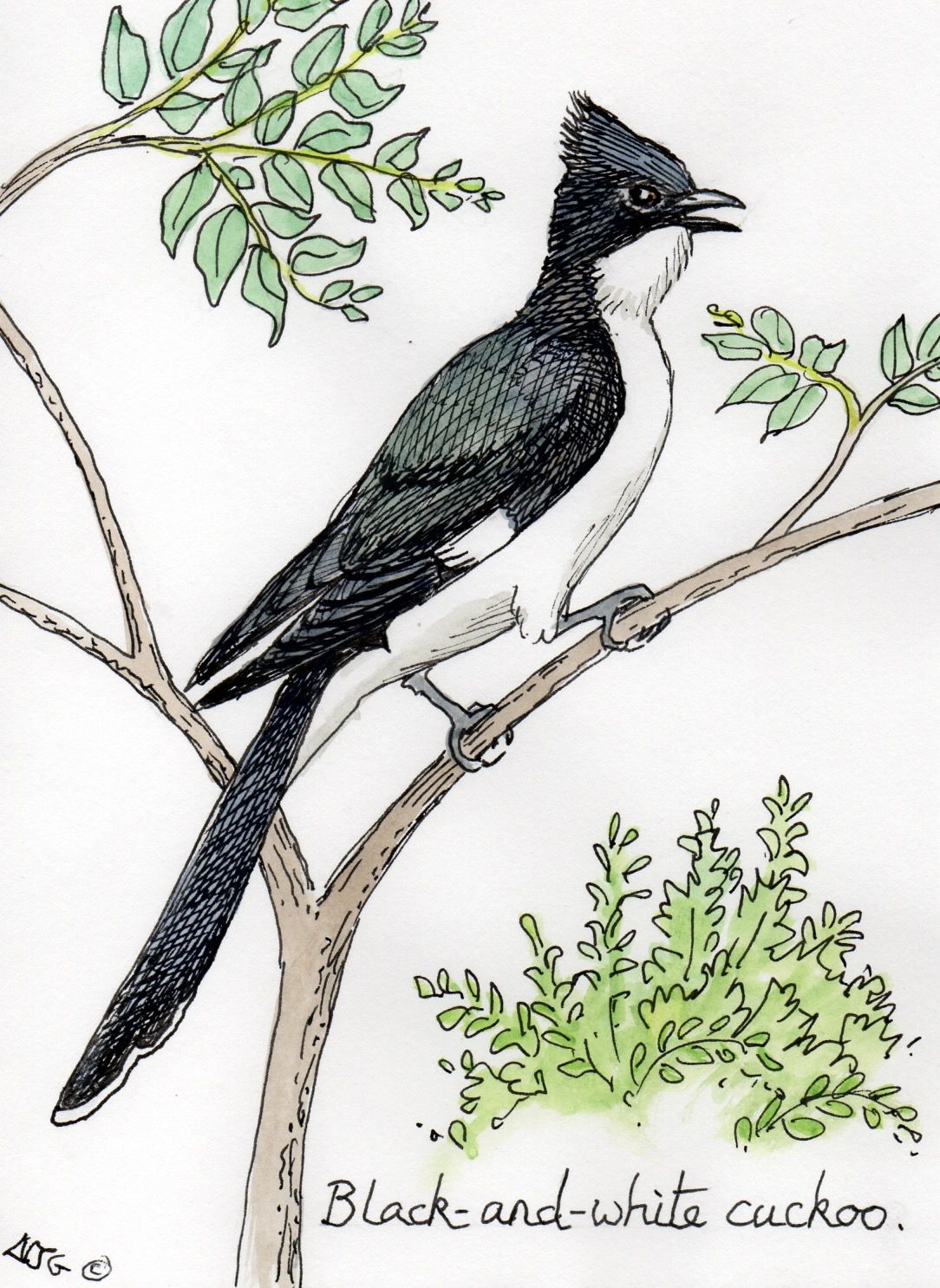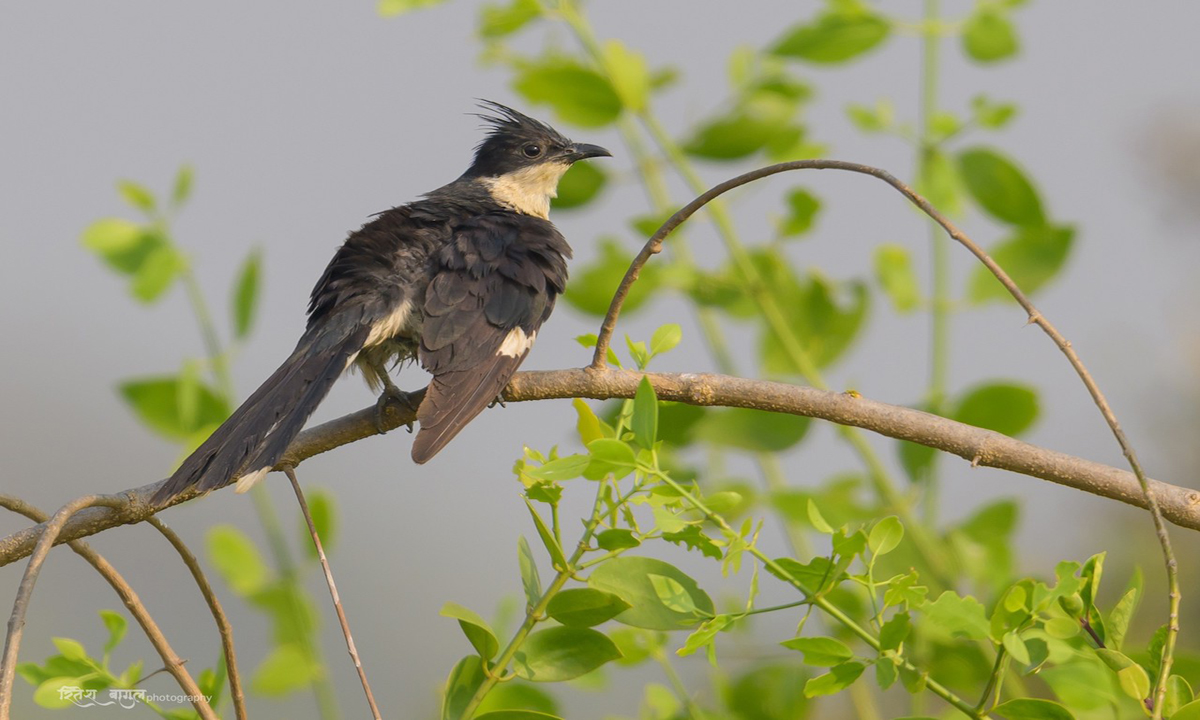Social Structure
These cuckoos are mostly found alone or in pairs.
Communication
Black and white cuckoos are noisy and call with a loud “kleeuw, kleeuw, kleeuw.” They are often heard at night.
Behavior
These birds mainly forage in trees and bushes for insects, but will also hop on the ground while searching for food. They chase each other during breeding season.
Conservation
Least concern
Diet
Preferred food items are hairy caterpillars, but black and white cuckoos also eat termites and other insects, as well as the eggs of other birds.
Breeding
Black and white cuckoo pairs use brood parasitism to reproduce; while the male distracts other nesting birds (often babblers or bulbuls), the female will lay an egg in the nests. Around 25 eggs will be produced by the female during breeding. Cuckoo hatchlings either eject the other eggs or out-compete nest mates for food, and fledge around 17-18 days after they hatch.
Friends & Foes
Because they rely on brood parasitism to reproduce, it is assumed black and white cuckoos affect the breeding success of other birds.
Population in Kenya
Black and white cuckoos are common in Kenya.
Range & Habitat
Subspecies of this bird are found in central sub-Saharan Africa, southern Africa, and in and around the Indian subcontinent in Asia.
Black and white cuckoos are found in a variety of arid open woodland and scrub, acacia savanna, and plains.



